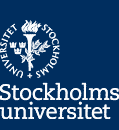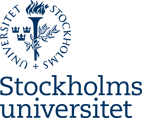PROGRAM
10.00-11.10 Maria Aloni, University of Amsterdam/ILLC
Free Choice Disjunction in State-based
Semantics
11.10-11.20 Break
11.20-12.30 Mats Wirén, Linguistics, Stockholm University
Social cues and word learning
12.30-14.00 Lunch
14.00-15.10 Valentin Goranko, Stockholm University
Rationality principles in pure coordination
games
15.10-15.30 Coffee
15.30-16.40 Elizabeth Coppock, University of Gothenburg/SCAS
Egophoricity in Kathmandu Newari
16.40-16.50 Break
16.50-18.00 Graeme Forbes, University of Colorado Boulder
Compositional approaches to event semantics
ABSTRACTS
Maria Aloni
Free Choice Disjunction in State-based Semantics
Abstract
In a state-based semantics sentences are interpreted with respect to states (defined as sets of possible worlds) rather than single possible worlds. This feature makes state-based semantics particularly suitable to capture the inherent epistemic and/or alternative-inducing nature of disjunctive words in natural language. In the first part of the talk, I will discuss three notions of disjunction that have been pro- posed in state-based semantics with emphasis on their potential to account for Free Choice (FC) inferences when combined with a possibility modal:
(1) FC inferences
a. Widescope: Qa∨Qb|=Qa∧Qb
b. Narrow scope: Q(a ∨ b) |= Qa ∧ Qb
The first notion ∨1 corresponds to disjunction in classical logic; the second notion V2 has been independently proposed in team logic (Yang and Väänänen, 2017) and in assertability logic (Hawke and Steinert-Threlkeld, 2016); the third notion V3 corresponds to inquisitive disjunction as in Ciardelli and Roelofsen (2011) (see also some versions of truthmaker semantics). Team/assertability logic ∨2 in combination with a context-sensitive notion of modality `a la Veltman (1996) derives wide scope FC inference (as discussed in Hawke and Steinert-Threlkeld, 2016). Inquisitive/truthmaker ∨3 combined with Aloni’s (2007) alternative-sensitive notion of modality derives narrow scope FC inference. Neither combinations however can account for both wide scope and narrow scope FC. Furthermore, when free choice inducing sentences occur embedded under negation, both systems predict weaker readings than attested in ordinary language use. In the second part of the talk, I will present a third state-based system, adopting V2, which derives both wide scope and narrow scope fc while solving the negation problem. Merits and shortcomings of this novel system will be discussed as well as its potential to be extended to account for free choice indefinites.
Mats Wirén
Social cues and word learning
Abstract
Child-directed speech has several distinct features when compared to speech among adults, such as shorter utterances, lower speech rate, fewer disfluencies, higher repetitiousness, greater variation of fundamental frequency, and a higher degree of synchrony between social cues (eye gaze, hands movements, etc.) and spoken utterances. These features are likely to serve several purposes, such as attention grabbing, but a hypothesis is that they also play a role in language acquisition. In this talk, I will take a closer look at synchrony in connection with parents' referring expressions, using a model which allows us to study the informativeness of the social cues, as well as the effects on informativeness of displaced timing of verbal utterances relative to these. The results indicate that social cues, in particular gaze, are highly informative, thereby strengthening the hypothesis that the cues are useful in word learning. The data which we use is a longitudinal corpus of parent–child interaction for which we have developed a rich multimodal annotation in which events can be studied in continuous time.
Valentin Goranko (based on joint work with Antti Kuusisto and Raine Rönnholm)
Rationality principles in pure coordination games
Abstract
The main question I will address is: when and how can rational agents coordinate without any prior communication? I will consider this question in the concrete framework of multi-player pure coordination games, where in every outcome all players have identical payoffs, `win’ or `lose’.
I will present and discuss a hierarchy of ‘rationality principles' that can be applied by rational players in such games to determine their choices of action, and will compare the classes of coordination games that can be solved with such principles by using only pure reasoning, without any preplay communication and conventions. I will argue that the boundaries between pure rationality principles and other decision methods used for solving coordination games are quite debatable, and that there is apparently no strongest one amongst the purely rational principles.
Lastly, I will discuss briefly how pure coordination games can be solved with the use of `structural’ conventions (only based on structural properties of the games), agreed in a preplay communication, and will describe precisely the scope of applicability of such structural conventions.
Elizabeth Coppock (joint work with Stephen Wechsler)
Egophoricity in Kathmandu Newari
Abstract
In several languages, including Kathmandu Newari, Lhasa Tibetan, Tsafiki, and Akvakh, there is a pattern of verbal morphology in which a special form (called the “conjunct” form or the “ego” form)
occurs on first person in declaratives and second person in interrogatives. For example, in Kathmandu Newari, it would occur on the verb “drink” in the equivalent of “I drank too much” and
“Did you drink too much?”, but not in “Did I drink too much?” or “You drank too much.” Uses of this marker with third-person subjects can also appear in combination with evidentials and in speech
reports. For example, in the equivalent of “Reportedly, Syam drank too much” with conjunct-marking on the verb, it is implied that Syam is the source of the report. Here we can see that conjunct-marking is also accompanied by an inference of knowing self-reference (de se), so the report must be one where Syam is aware of having drunk too much.
Our analysis runs as follows. First, we assume that a context of utterance supplies an `authority’ role, which is by default the speaker in a declarative and the addressee in an interrogative, but
may be deferred to a third party, and this is marked using an evidential. Second, we assume that conjunct marking, when attached to a verb, signifies that the entity playing the actor role in the event described by the verb is the egophoric center. We formalize this using a logic in which formulae may be associated with both centered intensions (set of centered worlds) and uncentered intensions (sets of ordinary worlds). We assume furthermore that an interrogative or declarative utterance pushes a centered worlds proposition or set thereof onto the ‘table’ as conceived by Farkas and Bruce. The contextually-relevant authority has responsibility for making one of these propositions pass from the table to the common ground, and must accept the proposition, i.e., must have the relevant de se attitude. In passing from the table to the common ground, the centered worlds proposition is ‘saturated’ as it were by the authority, and becomes an uncentered intension, so what goes in the common ground is not a private, de se proposition, but rather a public set of worlds.
Graeme Forbes
Compositional approaches to event semantics
Abstract
The constraint of compositionality has been thought to be a problem for neo-Davidsonian event semantics. A recent paper by Champollion (L&P 2015) puts this kind of semantics in a familiar type-theoretic framework, but at the cost of complexity and lesser expressive power. I compare Champollion’s account with a simpler one, and among other things discuss whether the simpler version’s relative expressive strength is a bug or a feature.




